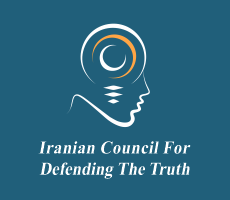The aphorism that “good fences make good neighbors” is poised to hold true for Iran and Pakistan following this year’s expected completion of their border fence. Pakistani Interior Minister Sheikh Rashid Ahmed said last week that approximately 40% of the project has been completed and that the rest of it should be done by December. This development will greatly improve the sometimes troubled relations between these neighboring nations considering that they occasionally accuse one another of sponsoring transnational armed groups. Both countries deny the charges leveled against them, but Iran suspects that Saudi Arabia has a hand in such attacks whenever they occur just like Pakistan feels the same about India whenever it’s victimized by the same. The border fence will hopefully put an end to these disturbances, thus enabling Iran and Pakistan to focus on more constructive matters of shared interest once this transnational security situation is resolved.
The rapidly changing geopolitics of the Eurasian Heartland in recent years and especially the last one have created exciting opportunities for these two countries to work closer together. The China-Pakistan Economic Corridor (CPEC), the flagship project of China’s Belt & Road Initiative (BRI), can prospectively expand westward through Iran via what’s been unofficially described as the W-CPEC+ vision (with “W” standing for west). China’s reported negotiations with Iran to invest what some have estimated might be as much as several hundred billion dollars into the Islamic Republic mean that W-CPEC+ is a much more realistic scenario that some critics might have assumed at first thought. No progress can be made on that front, however, until the transnational security situation in both countries’ Balochistan regions is resolved, ergo the grand strategic importance of the border fence.
Iran’s interests in improving relations with Pakistan stem from more than just good neighborliness although achieving this is arguably among the most important strategic tasks of the Islamic Republic today. In parallel with the aforementioned vector of Iran’s regional engagement, the country has also strengthened ties with Turkey in recent years as well. As it so happens, Pakistan and Turkey are allies, but they have difficulty expanding commercial connectivity with one another owing to geographic reasons. The most obvious solution is therefore for Iran to serve as the bridge between its two large neighbors via W-CPEC+ instead of them having to rely on more circuitous trade corridors such as the Lapus Lazuli one through Afghanistan, Turkmenistan, the Caspian Sea, and the South Caucasus. That route can complement, but mustn’t replace, W-CPEC+. Once again, for that to happen, the Iranian-Pakistani border region must first stabilize.
Last week’s two-day multinational conference in Istanbul on “Turkey, Pakistan and Central Asia: Partnership for Peace” saw one of the participants suggest the modern-day revival of historic Ottoman-Safavid-Mughal trade. This is clearly the need of the hour and in alignment with contemporary trends, primarily the one of civilizations emerging as increasingly independent actors in International Relations. Turkey, Iran, and Pakistan each share the glorious legacy of their former empires, and there’s no reason why they shouldn’t seek to revive it in as peaceful and pragmatic of a way as possible in line with international law. Territorial expansionism is part of a bygone era and no longer the modus operandi of spreading influence in today’s world where civilization-states like Turkey, Iran, and Pakistan can promote their Ottoman, Safavid, and Mughal heritages through people-to-people ties, trade, and the media.
The future of International Relations in the Eurasian Heartland might very well be one where Turkey, Iran, and Pakistan take advantage of prevailing geostrategic trends like W-CPEC+ and Civilizationalism to emerge as one of the most influential blocs in the Eastern Hemisphere this century. Instead of being aimed against anyone like some blocs tend to be, this one (referred to by the acronym TIP representing each nation unless a better name is agreed upon) would focus on bringing the supercontinent together just like their civilizational predecessors used to do during the era of the Old Silk Road. The only obstacle to this ambitious vision is the lingering security concerns stemming from the transnational threats that still continue to afflict the Iranian-Pakistani border region, but with the fence’s expected completion by the end of the year, that issue should be resolved. Before that happens, TIP should coordinate more closely in order to immediately take advantage of that development.

